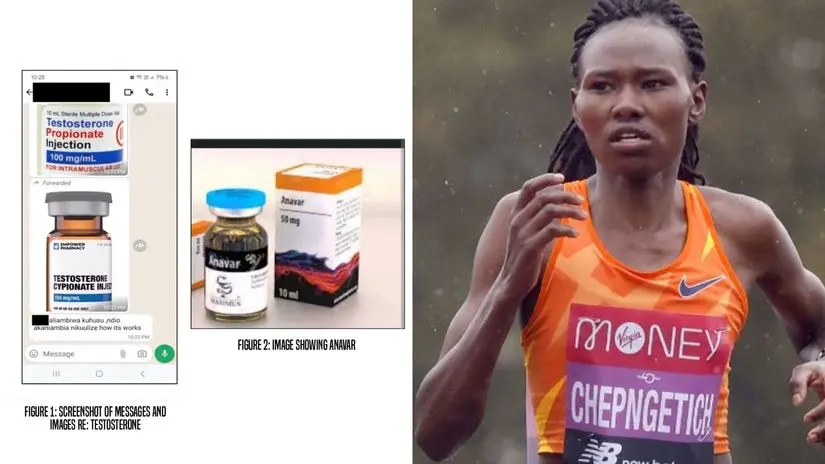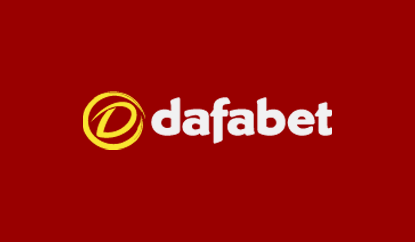The story of Ruth Chepng’etich Doping Case is not a simple headline about a suspension, it is a layered timeline of testing, questioning and a sport wrestling with trust. The women’s marathon world record holder, a three-time Chicago Marathon champion and 2019 world champion, has accepted a three-year ban, while investigators continue to sift through evidence that could yet reshape the final verdict.
What happened and why the ban is three years
Ruth Chepng’etich tested positive for Hydrochlorothiazide on March 14, 2025, an out-of-competition urine sample that returned an estimated concentration of 3,800 ng/mL, far above the World Anti-Doping Agency minimum reporting limit of 20 ng/mL. The Athletics Integrity Unit initially sought a four-year sanction, categorizing her conduct as recklessness amounting to indirect intent after she later claimed she had taken her housemaid’s medication while ill. Ultimately, she admitted to Anti-Doping Rule Violations and accepted the sanction within 20 days, so the standard four-year ban was reduced by one year under the Early Admission and Acceptance provision.
The suspension is effective from April 19, 2025, and disqualifies all of her results from March 14, 2025. AIU officials have stated that all achievements and records before that sample date remain, which means her stunning 2:09:56 world record from Chicago in October 2024 stands. Diuretics like HCTZ are banned because they can mask the presence of other prohibited substances, though they may also appear as contaminants in some pharmaceuticals.
Inside the investigation
When first interviewed on April 16, 2025, Chepng’etich could not explain the positive test, so investigators collected detailed information on her supplements and medications, retained available products for analysis, and copied her mobile phone. A WADA-accredited laboratory later reported that the retained products were negative for HCTZ, and on July 11, investigators confronted her with evidence from her phone that raised reasonable suspicion of intentional use. On July 31, she changed her explanation, saying she had been ill two days before the test and had taken her housemaid’s pills without checking, sending a photo of a blister pack labeled Hydrochlorothiazide.
Although that account was considered hardly credible by the AIU, it still led to the rule interpretation that her recklessness amounted to indirect intent, which justified pursuing a longer sanction. On August 22, 2025, she received a Notice of Charge seeking four years, and on September 10 she accepted, triggering the one-year reduction. AIU officials emphasize the initial case regarding the positive test is resolved, but their work is not done.
What keeps the case open is the ongoing review of her phone data. According to the AIU, suspicious material from her device is still being investigated to determine if other violations occurred. This includes a screenshot, dated April 14, 2024, that she received from another athlete showing two vials of testosterone and a message asking how testosterone works, as well as a photo from April 29, 2024, showing a vial and a box of Anavar, another banned steroid. There are also messages in 2022, 2023 and 2025 discussing people working on programs that could be related to doping, with Chepng’etich saying these were random forwards or saved automatically from group chats and that she never sought them out.
AIU Head Brett Clothier summarized the status with clarity.
“The case regarding the positive test for HCTZ has been resolved, but the AIU will continue to investigate the suspicious material recovered from Chepng’etich’s phone to determine if any other violations have occurred. In the meantime, all Chepng’etich’s achievements and records pre-dating the 14 March 2025 sample stand.”
The right of appeal by WADA and the Anti-Doping Agency of Kenya to the Court of Arbitration for Sport also remains, which underscores how the process can evolve as evidence is weighed.
The shifting explanations and the rulebook
Chepng’etich’s change of explanation on July 31, 2025, sits at the heart of the sanction length. Under the rules, specified substances like HCTZ can under some circumstances attract a two-year sanction, but the AIU deemed her account to demonstrate recklessness, which the Anti-Doping Rules treat as indirect intent. This moved the sanction range to four years, then her early acceptance shaved one year off. Hydrochlorothiazide is known both as a potential contaminant and as a frequently abused masking agent, and the concentration in her sample was multiple orders above the reporting limit, factors that shaped investigative scrutiny.
There were other touchpoints along the way. Chepng’etich had withdrawn from the London Marathon scheduled for April 27, 2025, citing poor preparation, and was formally flagged by the AIU in July. She is managed by Rosa Associati, a detail noted in the reporting around the case, though the AIU’s focus remains fixed on the evidence trail, from collected products to digital messages. The ban’s effect is long, with eligibility to return projected for April 2028, barring any successful appeals or changes to the sanction.
What remains of her legacy so far
Chepng’etich’s achievements before mid-March 2025 are still intact. The Chicago Marathon breakthrough in October 2024, when she became the first woman to run under 2 hours 10 minutes, is officially recognized. She captured the world marathon title in Doha in 2019, and her winning record in Chicago includes the 2021 and 2022 editions as well. Her résumé also features the 2021 Istanbul Half Marathon world record of 1:04:02, noted as the sixth-fastest in history.
That is the duality of this moment. The bans are meant to protect clean competition, but they also force the sport to reconcile extraordinary performances with the strictness of the anti-doping code. The AIU has underlined that nobody is above the rules, a sentiment that resonates deeply in distance running communities where trust is built on the thin line between endurance and enhancement.
How the sport reacted
Reaction came swiftly and forcefully across athletics. Olympic champion Gabby Thomas expressed skepticism about the scope, implying others may share responsibility.
“🙄 and who else is involved? She didn’t do this alone,”
she wrote, echoing a broader push for accountability that includes support staff and coaching structures. Her advocacy has included calls for tougher consequences where coaches are connected to doping violations.
Sifan Hassan’s coach, Tim Rowberry, questioned why the sanction was not the maximum, citing the circumstances around the case.
“I really try to give people the benefit of the doubt, but given these circumstances, I don’t understand why it wasn’t still a 4-year ban.”
Their views reflect a sport on edge, one that has been vocal about consistency and deterrence. Eliud Kipchoge has also spoken about the importance of clean sport in the aftermath, a reminder that the standard set by icons is as much about ethics as it is about excellence.
Why investigators are still looking at the phone
The digital trail matters because it can point beyond a single adverse test to potential patterns, networks, or assistance. The WhatsApp screenshot referencing testosterone and the image of Anavar are not conclusive on their own, but they triggered further inquiries into who was communicating with whom, and why. The AIU noted the source of the testosterone query was another athlete known to Chepng’etich, someone she messaged regularly, a detail that, if corroborated, could expand the case beyond a single user story.
Chepng’etich’s explanation is that she neither asked for advice nor responded, that the screenshot may have been taken by accident, and that the Anavar image could have been auto-saved from a group chat. The AIU will determine whether these files amount to additional rule violations, or whether they remain suspicious but inconclusive. Until that determination, the open-door status of the investigation remains a significant caveat to any sense of finality.
| CASINO | BONUS | INFO | RATING | |
|---|---|---|---|---|
|
bonus
Sign up for KES 46 bonus after first deposit!
See 11 Bonuses
|
info
20+ crash & instant games, Aviator bonuses BK 0000704 |
|||
|
bonus
500% bonus on first 4 deposits!
See 4 Bonuses
|
info
10 crash games, mobile-first site, 500% welcome bonus BK 000678 |
|||
|
bonus
50% welcome bonus up to KES 1,000
See 3 Bonuses
|
info
|
|||
|
bonus
100% bonus on first deposit!
See 14 Bonuses
|
info
Mobile friendly with 24 support & Curacao license and a lot of bonuses |
The AIU’s message and a funding reality
Beyond the specifics, the AIU leadership framed the case as an example of a system functioning as intended. Chair David Howman emphasized that nobody is above the rules and highlighted that the depth of testing and investigation in this case was made possible by unified funding from across road running. He cited contributions from events such as the Chicago Marathon, athlete representatives, athletes themselves, and shoe brands including adidas, ASICS, On and Nike. The point was clear, robust anti-doping work requires resources and cooperation.
The AIU’s public position is not just punitive, it is preventive. By continuing the analysis of phone data and keeping appeal pathways open to bodies like WADA and the Anti-Doping Agency of Kenya, the unit signals that integrity comes from vigilance over time. That long view is critical in a climate where each new case can either deepen cynicism or strengthen confidence, depending on how transparently and consistently it is handled.
What comes next and the questions that linger
Several timelines now run in parallel. The three-year ban counts down from April 2025 toward an April 2028 return. The ongoing AIU investigation into digital evidence continues without a public end date. The possibility of appeals to the Court of Arbitration for Sport remains, and any new violations, if established, could change the contours of the case. Meanwhile, all pre-March 14, 2025 achievements stay on the books.
For Kenya, this case adds to growing concern about doping violations and the strain they put on a revered distance-running legacy. For athletes everywhere, it underscores a hard rule, every pill and powder must be vetted, every explanation will be tested against data and science. For fans, it is a reminder that the most celebrated performances exist within a framework that is constantly audited by those tasked with protecting the sport.
The human story inside the headlines
Chepng’etich’s journey sits at the crossroads of triumph and fallout. To capture Chicago in a world record, then face a suspension only months later, is a whiplash narrative that speaks to both the heights of human endurance and the unforgiving precision of anti-doping protocols. She maintains she has never doped, yet her later admission that she took someone else’s medication without checking, and the towering HCTZ concentration in her sample, became the crux of the ruling. In this tension, the sport is again asked to balance empathy with enforcement.
The next chapters will tell us whether the phone investigation finds more, whether appeals are lodged, and how the broader ecosystem reacts to renewed calls for tougher sanctions and wider accountability. The AIU has drawn a clear line around the present facts, resolved the positive test and held back nothing about the suspicious materials still under review. The case is both a decision and a developing file, and for a sport that prizes clarity, that is the uncomfortable but necessary truth.
Key quotes
“The case regarding the positive test for HCTZ has been resolved, but the AIU will continue to investigate the suspicious material recovered from Chepng’etich’s phone to determine if any other violations have occurred. In the meantime, all Chepng’etich’s achievements and records pre-dating the 14 March 2025 sample stand.”, said AIU Head Brett Clothier.
“While disappointing for those who put their trust in this athlete, this is how the system is supposed to work. The road-running industry should be commended for collectively funding anti-doping efforts capable of uncovering violations committed by elite athletes.”, said AIU Chair David Howman, noting contributions from major events and shoe brands.
Bottom line
The ban is real, the record stands, and the investigation is active. Chepng’etich’s case sits at the center of a debate about sanction lengths, systemic responsibility, and the standards that define elite performance. Until the remaining questions are answered, the story will remain more than a result sheet, it is a test of the sport’s integrity and of the processes designed to defend it.










